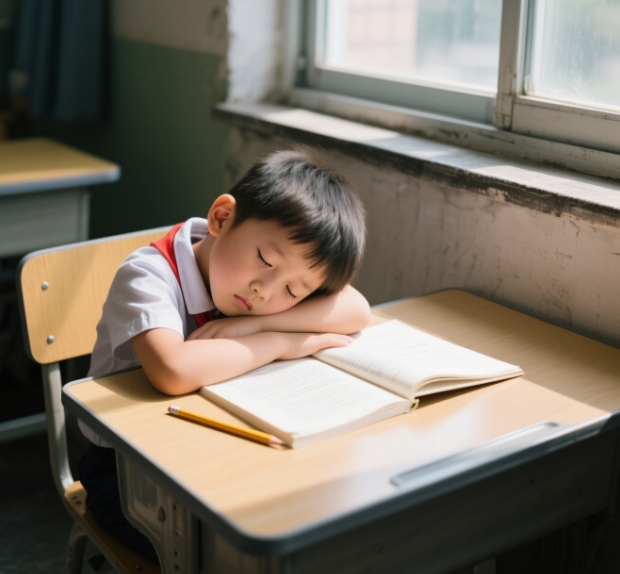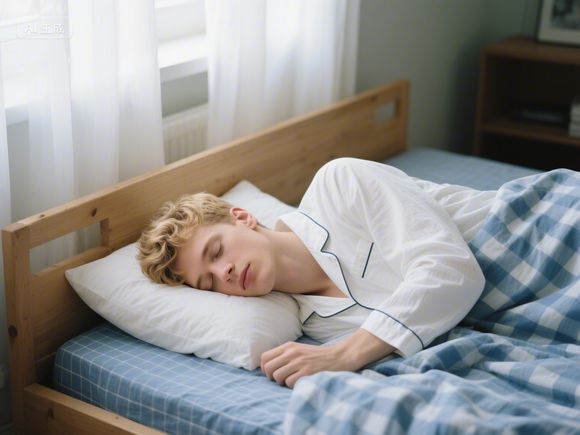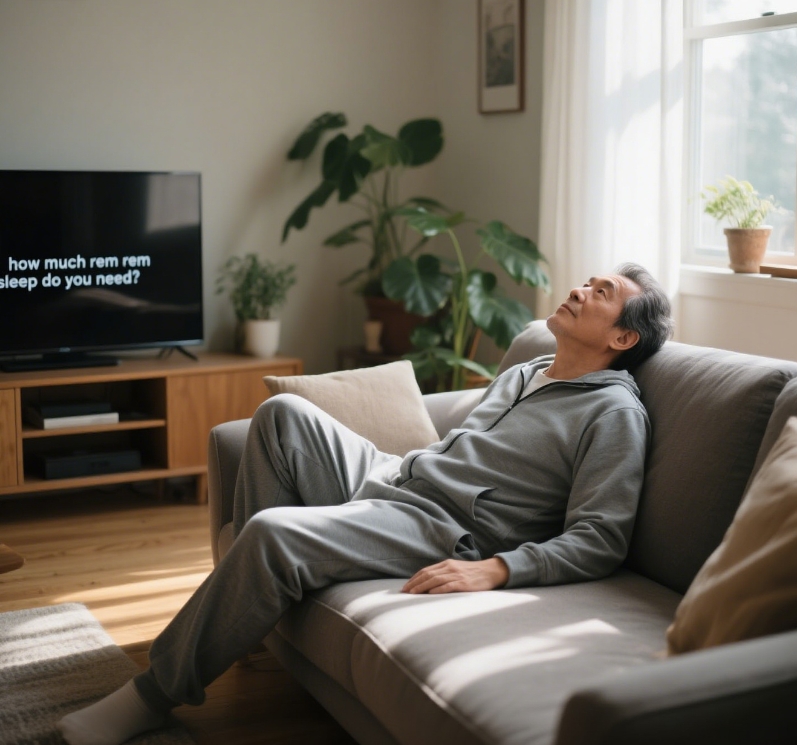Deep Sleep by Age: Science-Backed Needs From Infants to Seniors

Jim
writer | doctor
The Critical Role of Deep Sleep Across Lifespan
Deep sleep, scientifically known as slow-wave sleep (SWS), represents the most restorative phase of our sleep cycle. During this critical period, your brain engages in essential maintenance activities that impact everything from cognitive function to immune health. As we progress through different life stages, our deep sleep requirements evolve significantly.
According to the American Academy of Sleep Medicine (AASM), healthy adults require deep sleep to constitute 15-25% of their total sleep time. This translates to approximately 72-120 minutes during an 8-hour sleep period. However, these requirements vary substantially by age group.

As a neurologist specializing in sleep medicine for over 15 years, I've witnessed how misconceptions about sleep requirements contribute to chronic health issues. This comprehensive guide examines deep sleep needs through each life stage, supported by the latest clinical research and neuroscience findings.
Understanding Sleep Architecture
Sleep consists of multiple cycles, each lasting about 90 minutes and containing distinct stages. The two primary categories are:
NREM Sleep
Non-Rapid Eye Movement sleep has three stages progressing from light to deep sleep. Stage 3 (N3) is deep sleep characterized by slow brain waves called delta waves.
REM Sleep
Rapid Eye Movement sleep is when vivid dreaming occurs. While crucial for emotional processing, it doesn't provide the physical restoration of deep sleep.

During deep sleep, your brain undergoes remarkable changes:
- Cerebrospinal fluid flow increases by 60%, flushing out neurotoxins like beta-amyloid (associated with Alzheimer's disease)
- Growth hormone secretion peaks, crucial for tissue repair and development
- Memories are consolidated from short-term to long-term storage
- Metabolic functions are regulated, impacting glucose processing
A 2024 study published in Nature Neuroscience demonstrated that just one night of inadequate deep sleep reduced insulin sensitivity by 25% in healthy adults, highlighting its metabolic importance.
Deep Sleep Requirements by Age Group
Sleep architecture evolves dramatically throughout our lifespan. The following table details evidence-based deep sleep requirements by age group, drawing on data from the National Sleep Foundation, American Academy of Pediatrics, and longitudinal studies.
| Age Group | Deep Sleep Requirement | Scientific Basis | Health Impact of Deficiency |
|---|---|---|---|
| 0-2 Years (Infants) | 50% of total sleep (REM + Deep) | REM sleep dominates initially, gradually shifting to deep sleep patterns by 6 months. Essential for neuronal pathway development. | Language delays, impaired motor skill development |
| 3-12 Years (Children) | 20-25% (1.5-2.5 hours nightly) | Deep sleep consolidates daily learning. Prefrontal cortex development requires adequate slow-wave sleep. | 40% increased ADHD risk, weakened immune function |
| 13-18 Years (Teens) | 15-20% (1.2-1.8 hours nightly) | Delayed circadian rhythm reduces sleep window. Deep sleep critical for emotional regulation during hormonal changes. | 2x higher depression rates, academic performance decline |
| 19-60 Years (Adults) | 13-23% (1-1.8 hours nightly) | Deep sleep decreases approximately 2% per decade after 30. Stress and lifestyle factors significantly impact quality. | Chronic inflammation, weight gain, hypertension risk |
| 60+ Years (Seniors) | 10-15% (<1 hour nightly) | Age-related changes in sleep architecture reduce slow-wave activity. Medical conditions and medications further impact depth. | Accelerated cognitive decline, balance issues, frailty |
Important Note: While deep sleep naturally decreases with age, a reduction below age-adjusted norms may indicate underlying health issues. Individuals experiencing excessive daytime sleepiness or cognitive difficulties should consult a sleep specialist.
Age-Specific Solutions for Improving Deep Sleep
Each life stage presents unique challenges to obtaining adequate deep sleep. Here are evidence-based approaches tailored to different age groups:
For Children (3-12)
Establish consistent bedtime routines 60 minutes before sleep. Limit screen exposure in evenings using blue light filters. Maintain bedroom temperature at 68-72°F (20-22°C).
AASM Level A RecommendationFor Teens (13-18)
Advocate for later school start times. Encourage morning sunlight exposure to reset circadian rhythm. Limit caffeine after 2 PM. Implement digital curfews.
CDC Guideline SupportedFor Adults (19-60)
Take warm baths 90 minutes before bedtime to trigger core temperature drop. Practice stress-reduction techniques. Consider magnesium glycinate supplementation after medical consultation.
RCT Proven EffectiveFor Seniors (60+)
Address nocturia with timed fluid intake. Implement afternoon bright light therapy. Evaluate medication timing with physicians. Consider CBT-I (Cognitive Behavioral Therapy for Insomnia).
ESS Guideline RecommendedA 2025 Stanford University study demonstrated that adults who implemented temperature-focused sleep strategies (cool room + warm bath) increased deep sleep duration by 23% within four weeks.
Debunking Common Deep Sleep Myths
Misinformation about sleep abounds. Let's examine scientific realities behind widespread misconceptions:
Myth: More Deep Sleep is Always Better
Reality: While deep sleep is crucial, excessive amounts (consistently >2 hours in adults) may indicate underlying disorders like hypersomnia. Quality matters more than absolute duration.
Myth: Alcohol Improves Sleep Quality
Reality: Alcohol fragments sleep architecture, suppressing REM and disrupting deep sleep cycles. It may help with sleep onset but significantly reduces overall sleep quality.
Fact: Sleep Trackers Have Limitations
Consumer wearables estimate deep sleep through movement and heart rate variability, not brain waves. Clinical studies show error rates up to 40% compared to polysomnography.
Fact: Deep Sleep Declines Naturally
By age 70, most individuals experience 70-80% less deep sleep than during childhood. This normal progression becomes problematic only when accompanied by functional impairment.
When to Consult a Sleep Specialist
While age-related changes in sleep patterns are normal, certain symptoms warrant professional evaluation. Seek medical advice if you experience:
Diagnostic options range from at-home sleep tests to comprehensive in-lab polysomnography, which measures brain waves, oxygen levels, and breathing patterns during sleep.
Credible Sleep Health Resources
Professional Organizations
American Academy of Sleep Medicine (AASM) - Provider directory and clinical guidelines
Sleep Research Society - Latest scientific findings
Evidence-Based Tools
CBT-I Coach app (Department of Veterans Affairs)
Sleep Diary templates from National Sleep Foundation
Educational Materials
Healthy Sleep Habits (Harvard Medical School)
Children's Sleep Guidelines (American Academy of Pediatrics)
Interactive Sleep Assessment Tools
Deep Sleep Deficiency Risk Calculator
Your Deep Sleep Profile:
Based on your inputs, your deep sleep patterns appear within normal range for your age group.
The Circadian Connection: Light Exposure Timing
6-8 AM
Critical Window: 15 mins direct sunlight resets melatonin production
1-3 PM
Alertness Boost: Natural cortisol peak enhances focus
7-9 PM
Wind Down: Amber lighting triggers melatonin secretion
10 PM-4 AM
Deep Sleep Phase: Core body temperature drops 1-2°F
"Light exposure between 9-11 PM suppresses deep sleep by delaying core temperature drop. This effect is 3x stronger in teens than adults."
Medical Perspectives: When Deep Sleep Loss Signals Danger
Case Study: The 52-Year-Old Executive
Intervention: CPAP therapy + sleep phase advancement protocol
Outcome at 3 Months: Deep sleep increased to 68 mins (+79%), BP normalized to 122/78 without medication
Medical Red Flags Requiring Sleep Study
- Frequent night urination (>2x/night) with no urological cause
- Morning blood pressure >135/85 despite medication
- Acting out dreams (potential REM sleep behavior disorder)
- BMI >30 with daytime fatigue

